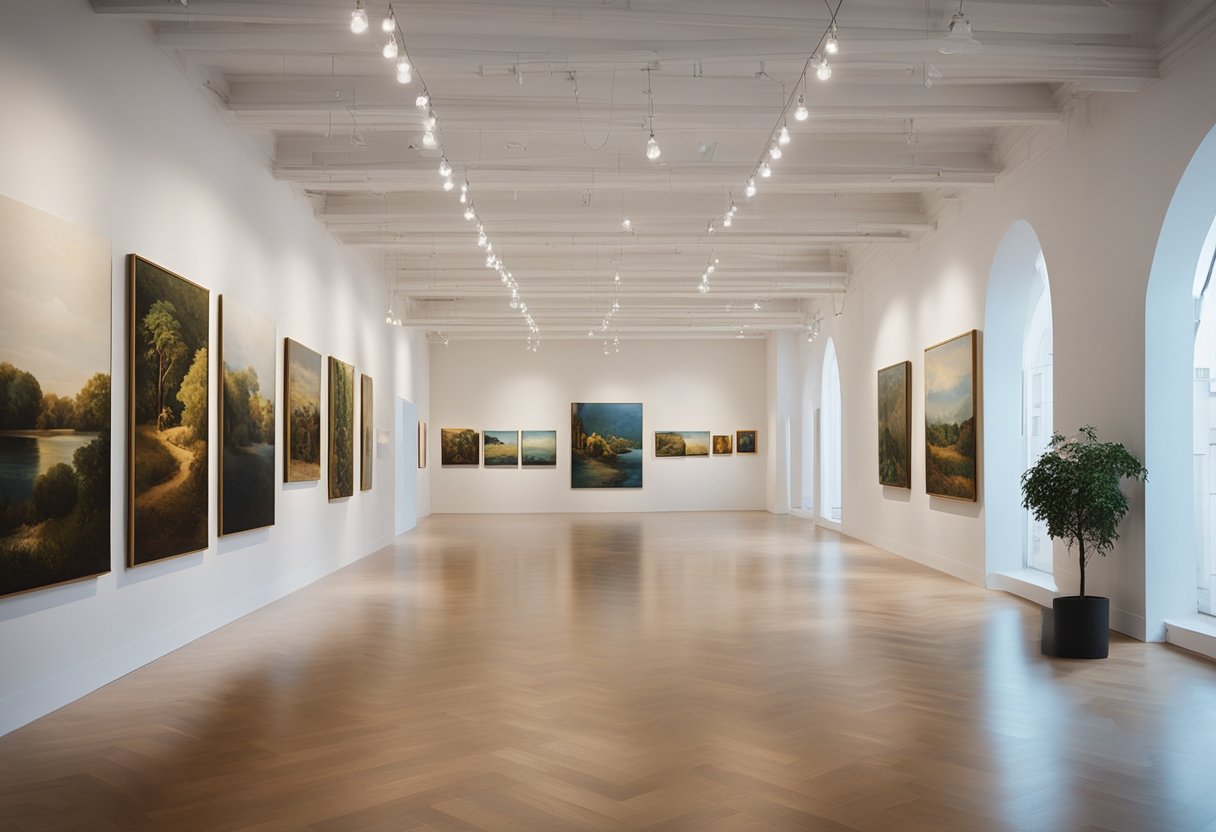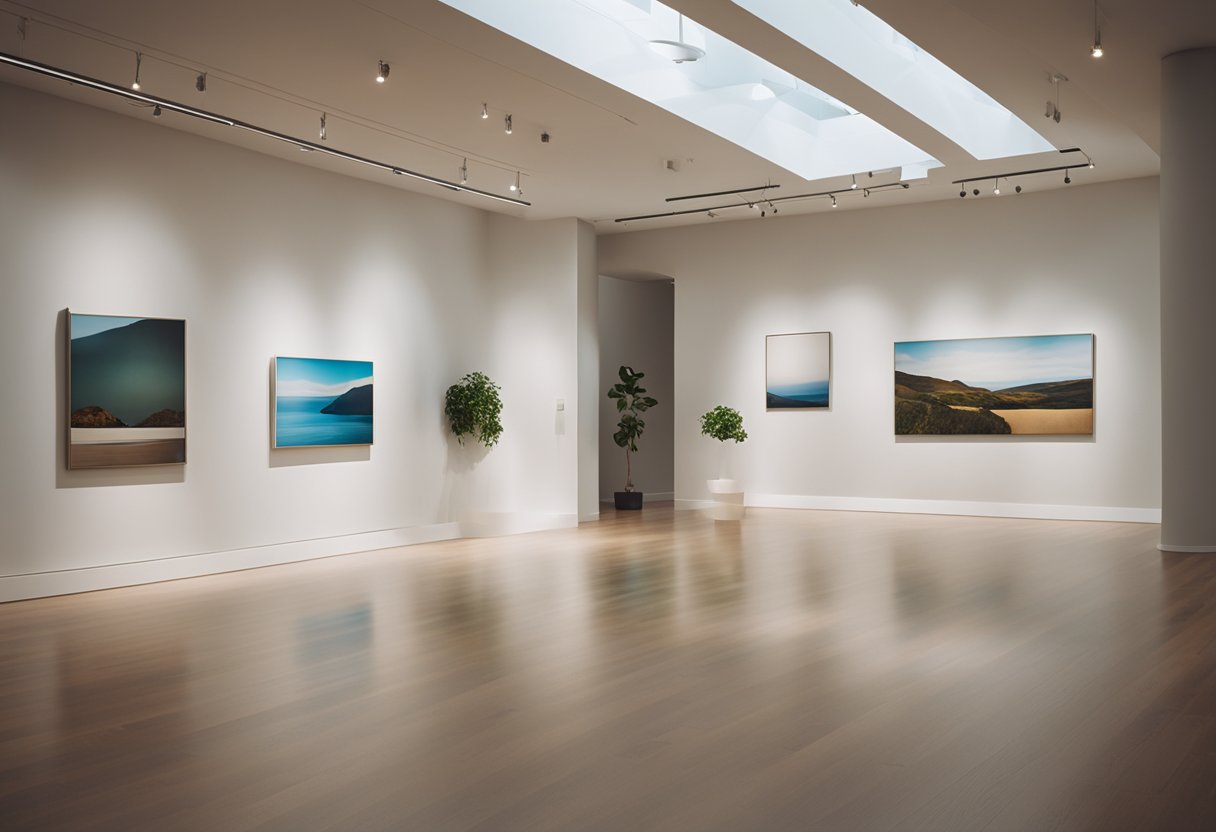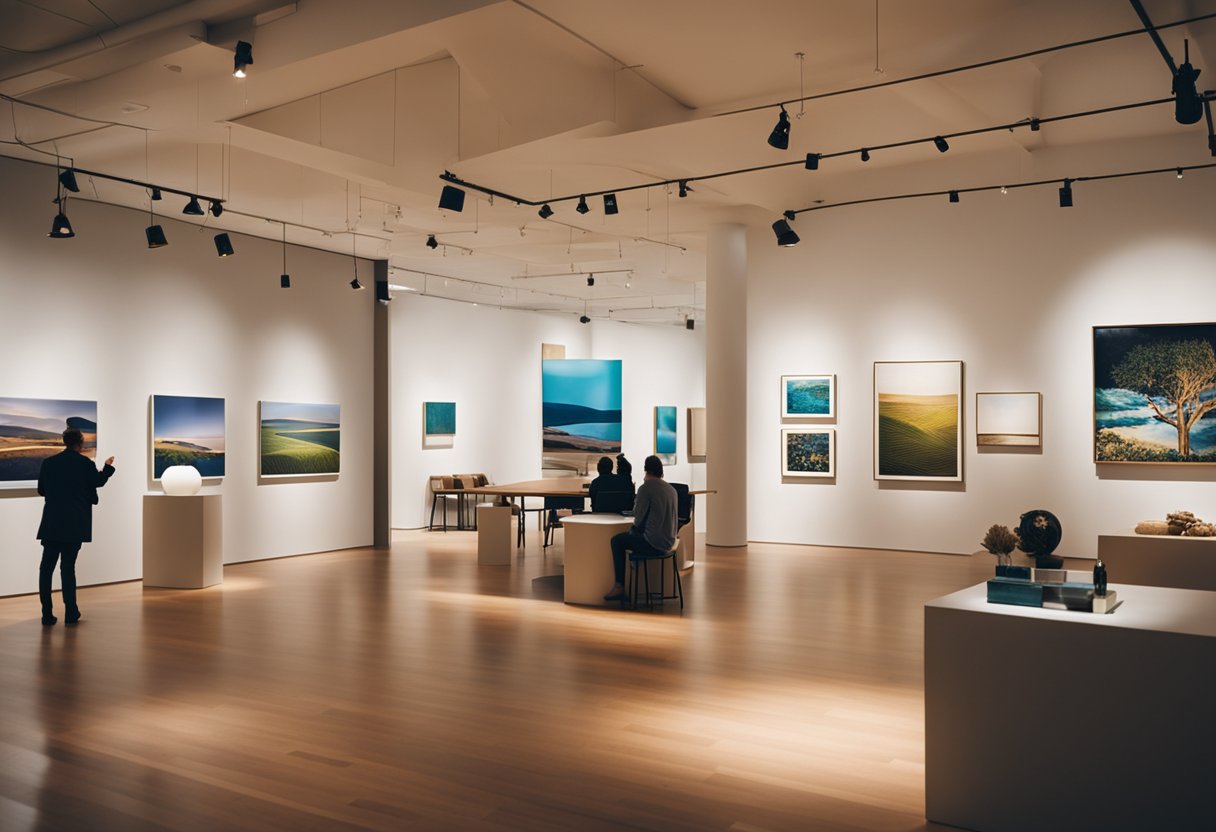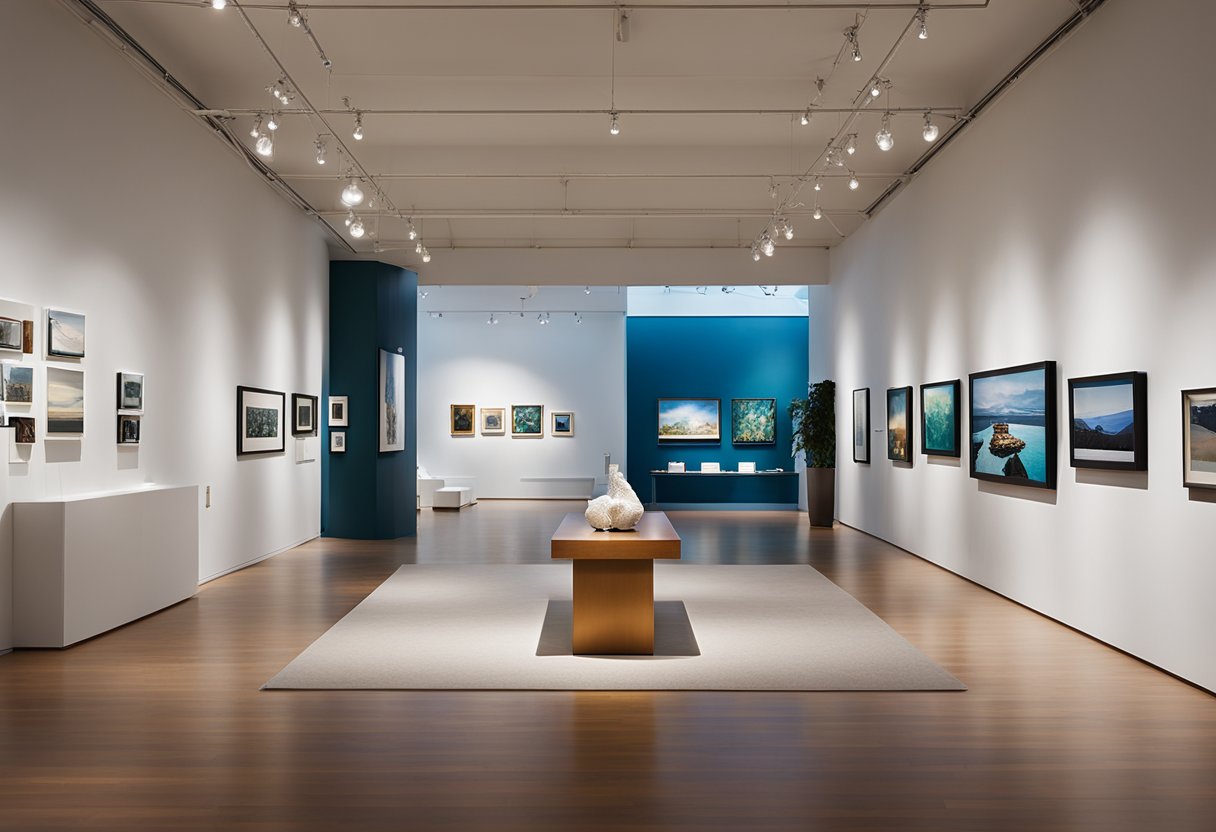Art Gallery Interior Design: Elevating the Exhibition Experience
Art gallery interior design plays a crucial role in creating a unique and memorable visitor experience. The design of an art gallery should not only showcase the artwork but also create a space that complements and enhances the art. A well-designed art gallery interior should be able to engage the visitor and create a lasting impression.

Design principles of art gallery interiors include the use of space, lighting, colour, and texture. An art gallery should have a layout that is easy to navigate and should have enough space to allow visitors to move around freely. Lighting plays a crucial role in showcasing the artwork and should be used to highlight the key pieces. The use of colour and texture should be used to create a cohesive and harmonious environment that enhances the artwork.
Curating the visitor experience is an important aspect of art gallery interior design. The design should be able to create an emotional connection with the visitor and should be able to evoke a sense of wonder and curiosity. The visitor’s journey through the gallery should be carefully curated to create an immersive and memorable experience.
Key Takeaways
- Art gallery interior design should create a unique and memorable visitor experience.
- Design principles of art gallery interiors include the use of space, lighting, colour, and texture.
- Curating the visitor experience is an important aspect of art gallery interior design.
Design Principles of Art Gallery Interiors

When it comes to art gallery interiors, there are certain design principles that can help create a space that is both aesthetically pleasing and functional. Here are some key factors to consider when designing an art gallery interior:
Influence of Shape and Space
The shape and size of the space can have a big impact on the overall feel of the gallery. High ceilings, for example, can create a sense of grandeur and energy, while smaller spaces can feel more intimate and cozy. The layout of the space is also important, as it can affect the flow of movement and how visitors interact with the art. Consider creating distinct areas within the gallery, such as separate rooms or alcoves, to create a sense of visual inspiration.
The Role of Lighting in Art Presentation
Lighting is crucial when it comes to displaying art, as it can affect the mood and energy of the space. Natural light can be used to create a bright and airy feel, while artificial lighting can be used to highlight specific pieces or create a more dramatic effect. Consider using a combination of both natural and artificial lighting to create a dynamic and visually interesting space.
Material Selection for Aesthetic and Functionality
The materials used in the gallery interior can also have a big impact on the overall feel of the space. Finishes such as concrete, wood, or metal can create a modern and industrial feel, while softer materials such as fabric or carpet can create a more cozy and inviting atmosphere. It’s also important to consider the functionality of the materials, such as durability and sustainability.
Overall, the design of an art gallery interior should be focused on creating a space that showcases the art in the best possible way while also creating a visually interesting and engaging environment for visitors. By considering factors such as shape, lighting, and materials, you can create a space that is both functional and aesthetically pleasing.
Curating the Visitor Experience

When it comes to designing an art gallery, the focus should be on curating an experience that engages and delights visitors. In this section, we’ll explore some key strategies for creating a memorable and engaging visitor experience.
Strategic Art Placement and Exhibition Flow
One of the most important aspects of art gallery interior design is the strategic placement of art and exhibitions. By carefully considering the flow of the space and the placement of each artwork, you can create a cohesive and engaging experience for visitors.
Consider the environmental conditions, such as lighting and temperature, that will affect the presentation of the artworks. Collaborate with art consultants and professionals to ensure that the artworks are displayed in a way that highlights their unique qualities and encourages visitors to engage with them.
Incorporating Interactivity and Technology
Incorporating interactivity and technology into your gallery design can help create a more immersive and engaging experience for visitors. Consider incorporating touchscreens, audio guides, or virtual reality experiences to enhance visitors’ understanding and appreciation of the artworks.
Interactive exhibits can also help attract and engage younger visitors, who may be more accustomed to interactive experiences in other areas of their lives. By incorporating technology in a thoughtful and strategic way, you can create a gallery experience that is both educational and entertaining.
Furniture and Amenities for Engagement and Comfort
In addition to the art and exhibitions themselves, it’s important to consider the furniture and amenities that will enhance visitors’ comfort and engagement with the space. Consider providing comfortable seating areas where visitors can rest and reflect on what they’ve seen.
You may also want to provide amenities such as a café or gift shop, which can help extend visitors’ engagement with the gallery beyond the exhibition itself. By creating a comfortable and welcoming environment, you can encourage visitors to spend more time in your gallery and deepen their engagement with the artworks.
In conclusion, by taking a strategic and thoughtful approach to art gallery interior design, you can create a visitor experience that is both engaging and memorable. By considering factors such as strategic art placement, interactivity and technology, and amenities for comfort and engagement, you can create a gallery space that delights visitors and attracts art collectors and tourists alike.
Frequently Asked Questions

How can I infuse a modern aesthetic into my art gallery’s interior design?
If you want to give your art gallery a modern look, you can start by incorporating sleek and minimalist furniture. You can also use modern lighting fixtures to create a warm and inviting atmosphere. A neutral colour palette with bold accents can work wonders in creating a contemporary feel.
What are some innovative ideas for designing the interior of an art gallery?
Innovative ideas for art gallery interior design include using unconventional materials to create a unique look, such as using reclaimed wood for flooring or incorporating living walls into the space. You can also experiment with lighting to create a dramatic effect or use interactive installations to engage visitors.
Could you explain the key elements that define the concept of art gallery interior design?
The key elements of art gallery interior design include lighting, space planning, colour, and furniture. Lighting is crucial in highlighting the artwork and setting the mood of the space. Space planning involves the arrangement of artwork and furniture to create a cohesive flow. Colours can be used to create a specific ambiance, and furniture can be used to complement the artwork and create a comfortable environment.
What design strategies are recommended for maximising space in a small art gallery?
To maximise space in a small art gallery, you can use modular furniture that can be easily rearranged to accommodate different exhibitions. You can also use shelves and wall-mounted displays to showcase artwork without taking up valuable floor space. Using glass walls and partitions can create the illusion of more space while still providing privacy.
What are the essential considerations when creating a floor plan for an art gallery?
When creating a floor plan for an art gallery, it’s essential to consider the flow of traffic, the placement of artwork, and the lighting. You should also consider the type of artwork you will be displaying and how it can be best showcased in the space. The floor plan should be flexible, allowing for easy changes to accommodate different exhibitions.
How can I achieve a professional art gallery ambiance in my home?
To achieve a professional art gallery ambiance in your home, you can start by selecting a neutral colour palette and incorporating modern lighting fixtures. You can also use minimalist furniture and strategically placed artwork to create a cohesive flow. Lighting is crucial in creating a warm and inviting atmosphere, so consider using dimmer switches and adjustable lighting fixtures.



